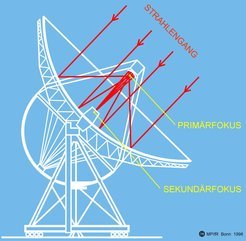Technical data
The 100-metre telescope in Effelsberg is one of the world's largest fully steerable radio telescopes. It can detect radio waves in wavelengths between 90 cm and 3.5 mm.
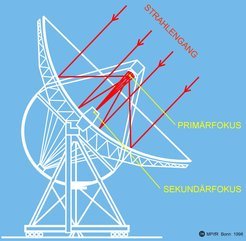
The large surface of the antenna (approximately 7,850 m²) is crucial in detecting extremely weak radio signals. The large diameter of 100 meters makes it possible to reach a comparably high angular resolutionI (defined as the smallest distance in the celestial sphere where the telescope is still able to distinguish between two different objects). This resolution amounts to 35 angular seconds at a wavelength of 1.3 cm, which is about twice the resolving power of the eye for visible light.
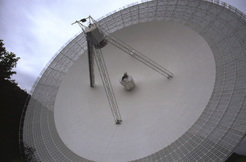
Short wavelengths can be observed because even though the steel construction is subject to elastic deformation of several centimetres, the maximum deviation of the reflector from the ideal parabolic shape is 0.5 mm. When the telescope is bent, the shifting of the focal point is compensated by means of electronic re-steering.
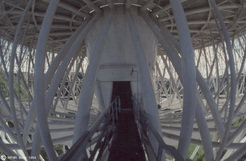
Horn aerials with extremely sensitive low-noise amplifiers are used to detect the radiation which has been concentrated by the main reflector. The horn aerials are positioned right in the focal point of the large surface below the primary focus cabin which is located on the supporting stands. A small elliptic reflector also makes it possible to redirect the radiation yet again, and to focus it into the secondary focus. Additional detecting devices can be operated simultaneously.
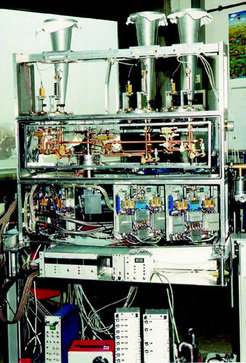
The instruments used for registering, editing, and storing the detected signals are located in the building at the mountainside above the telescope. This also houses the computers which are used for steering the telescope and conducting data analysis.
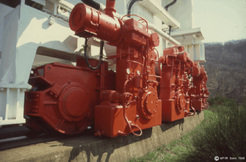
The radio telescope was erected on a 64-m-diametre base ring. The steel construction weighs 3,200 tons in total. It takes twelve minutes to rotate the telescope's parabolic reflector horizontally by 360 degrees, and in about six minutes it can change its angle by 90 degrees. This guarantees that the whole sky above the horizon is accessible to the telescope.
